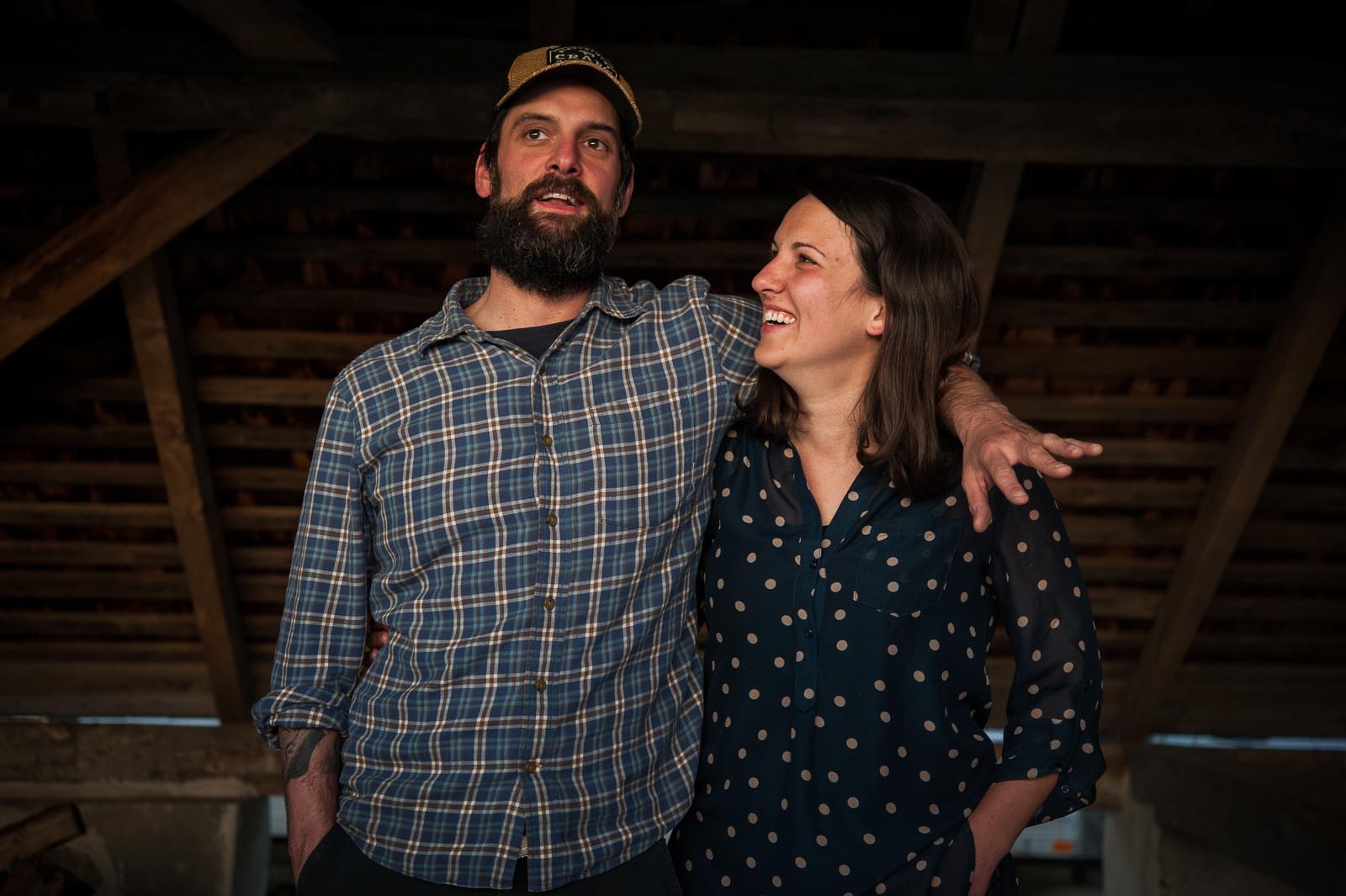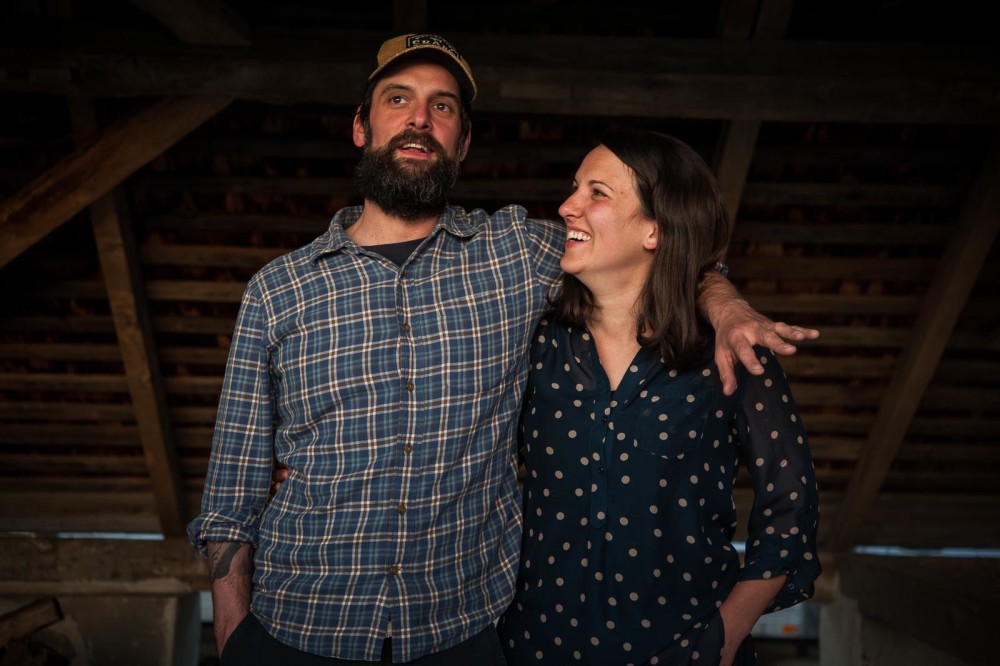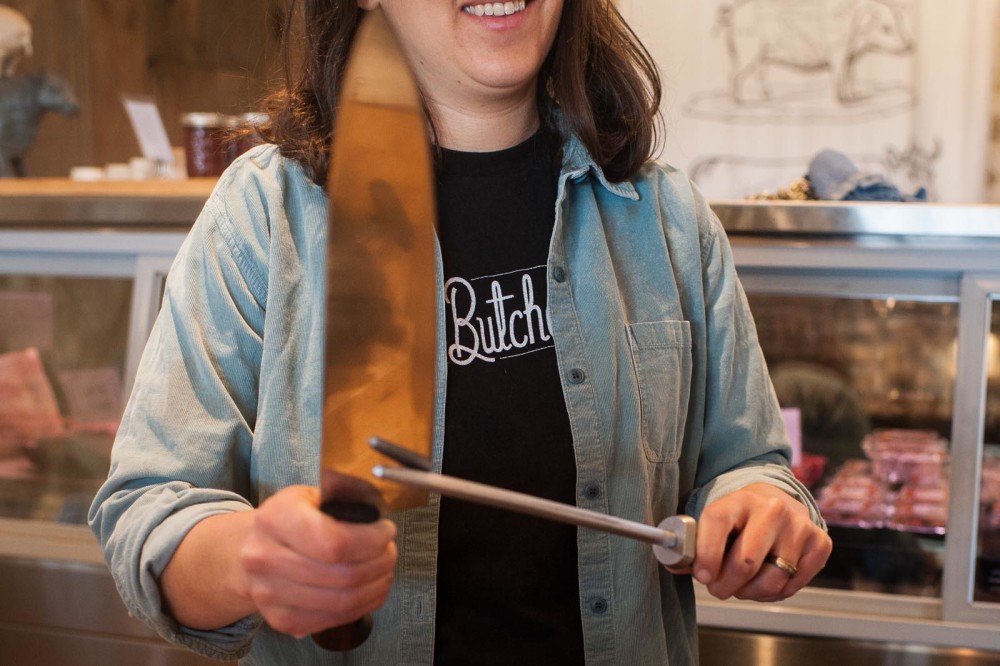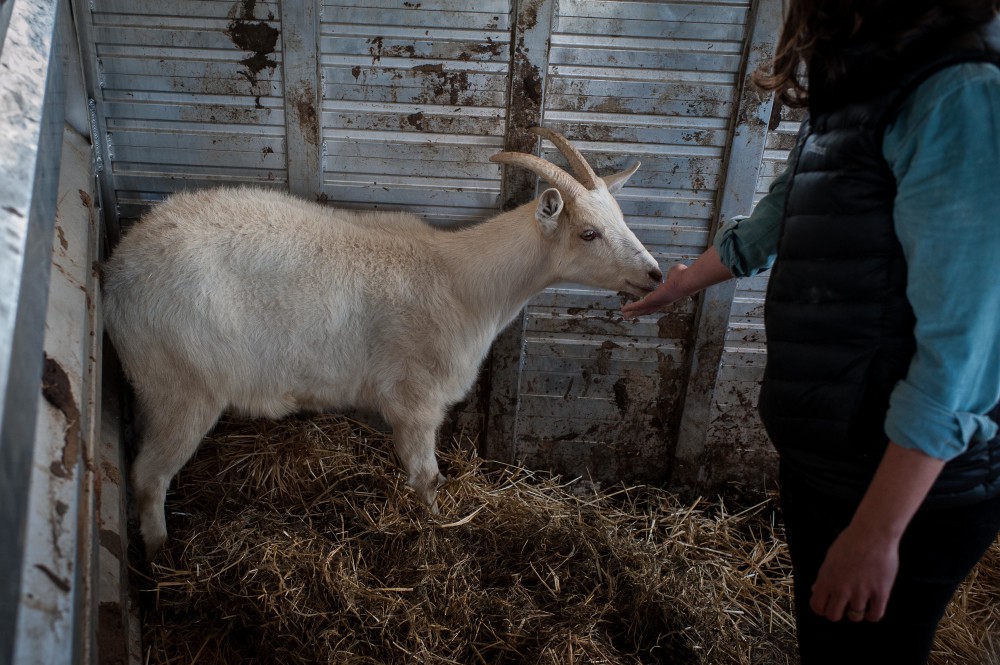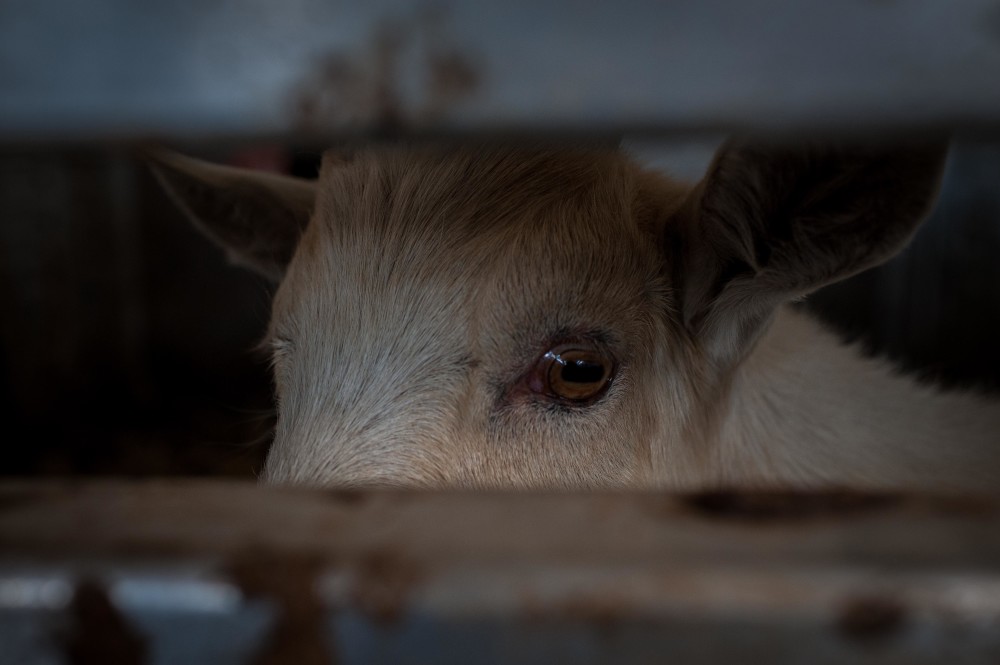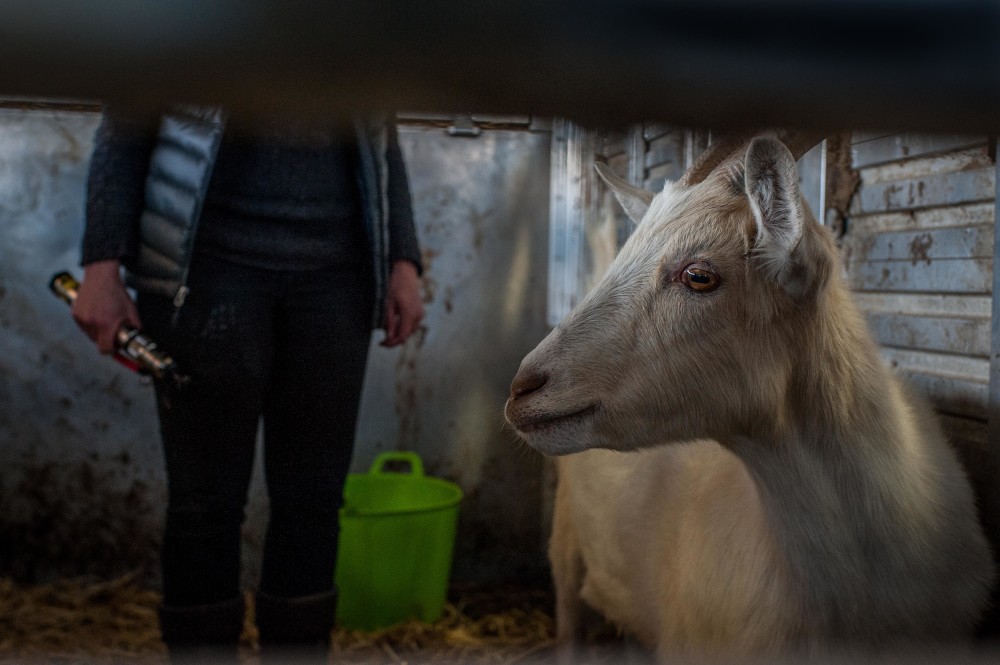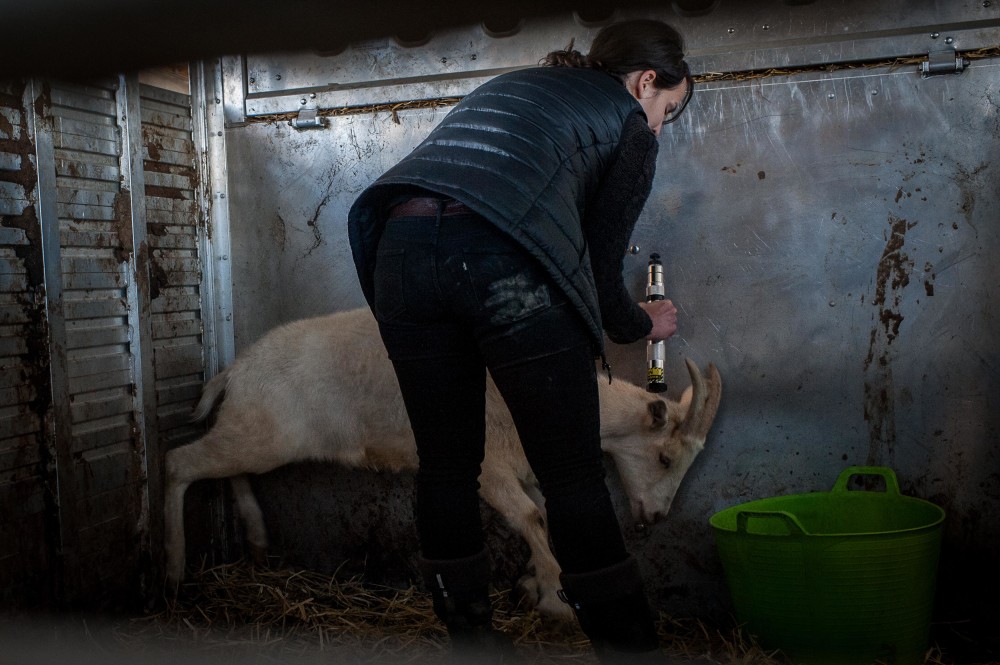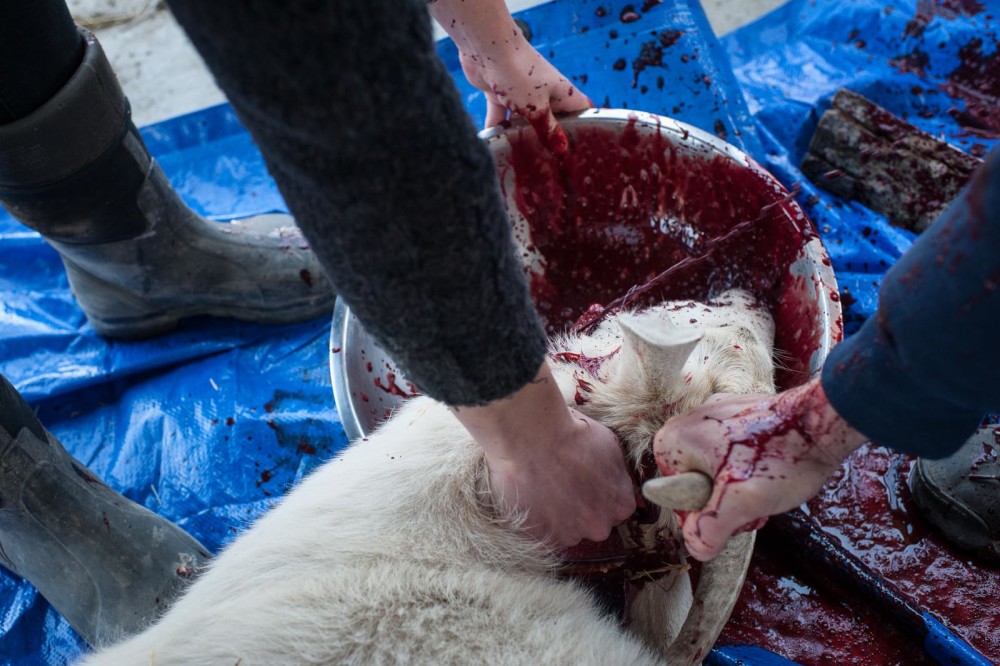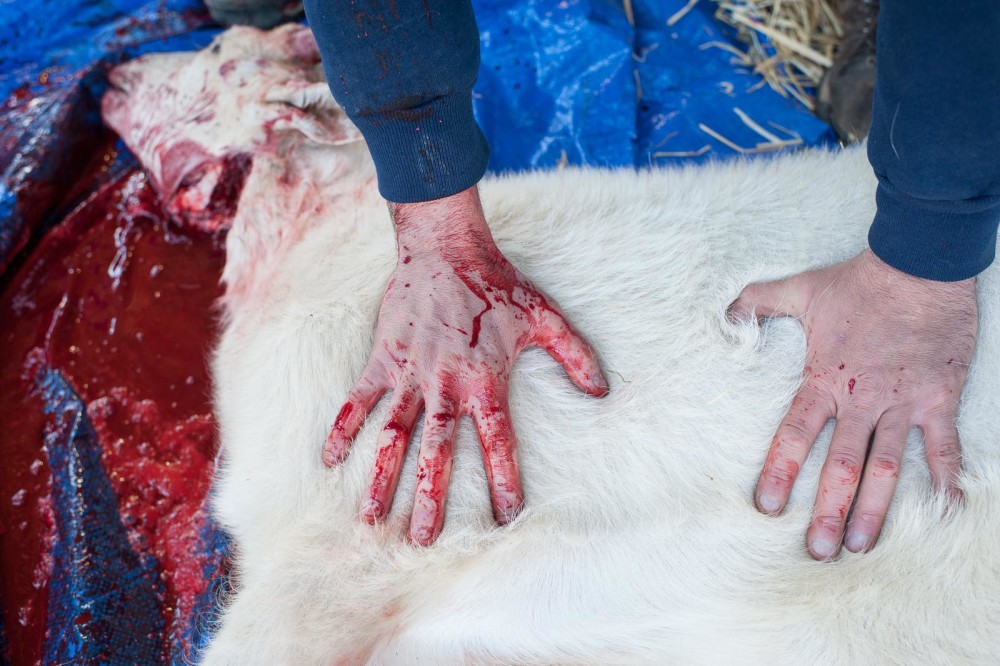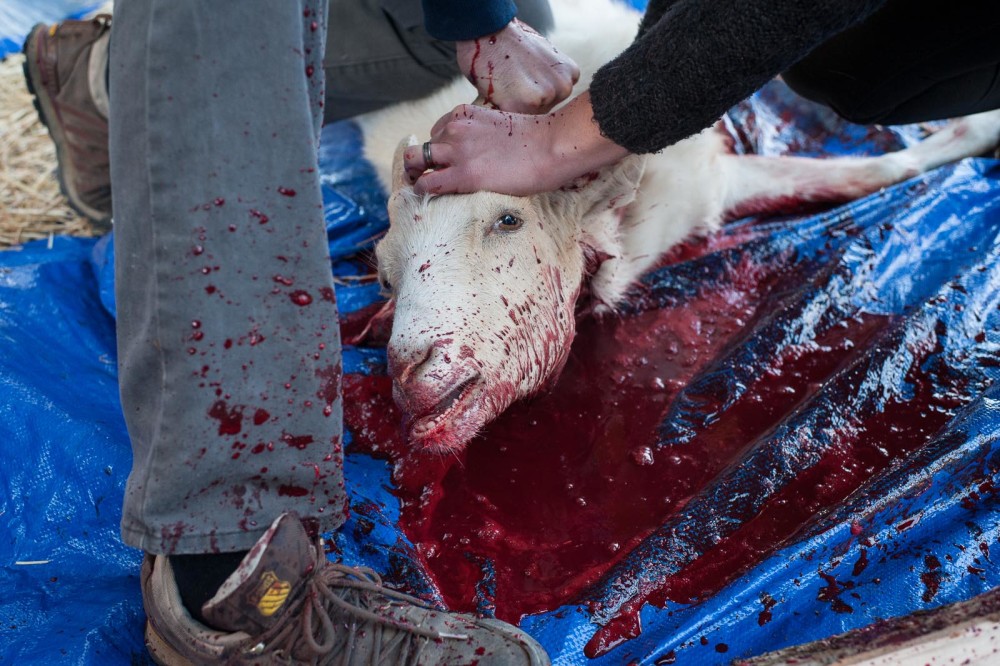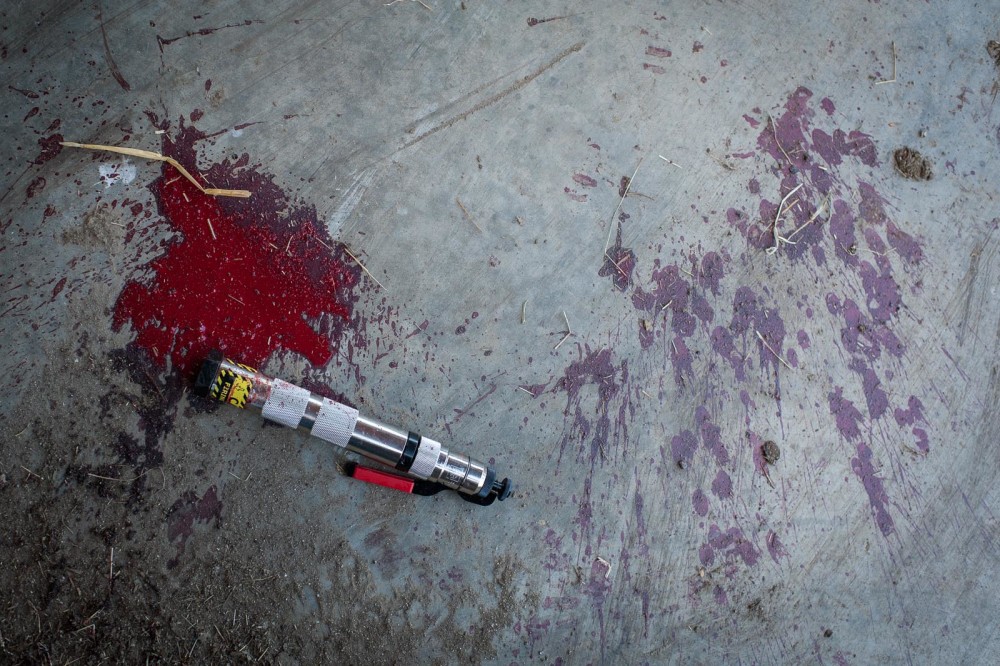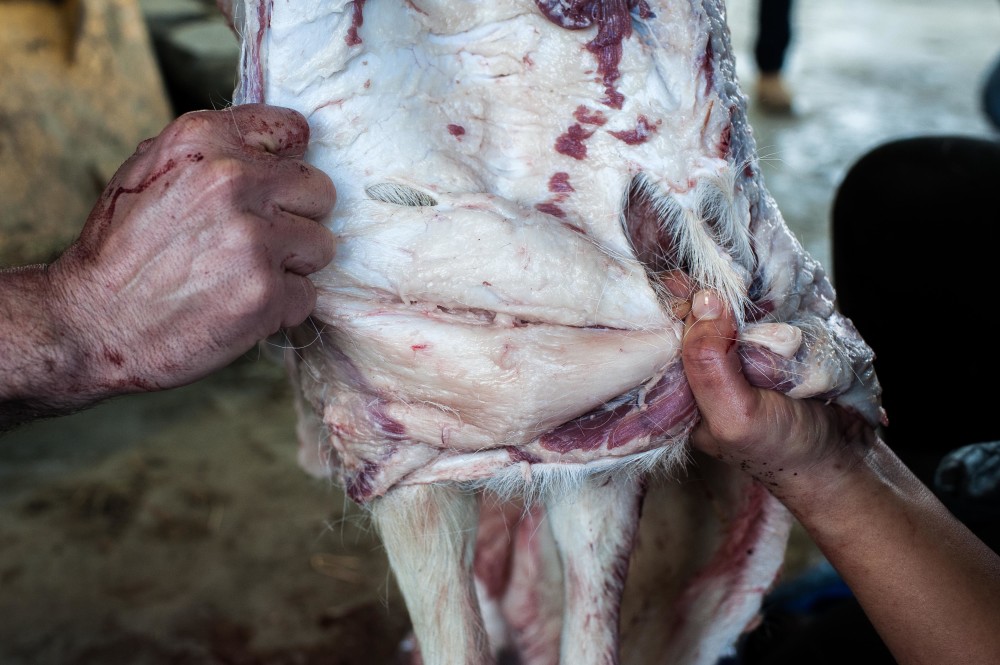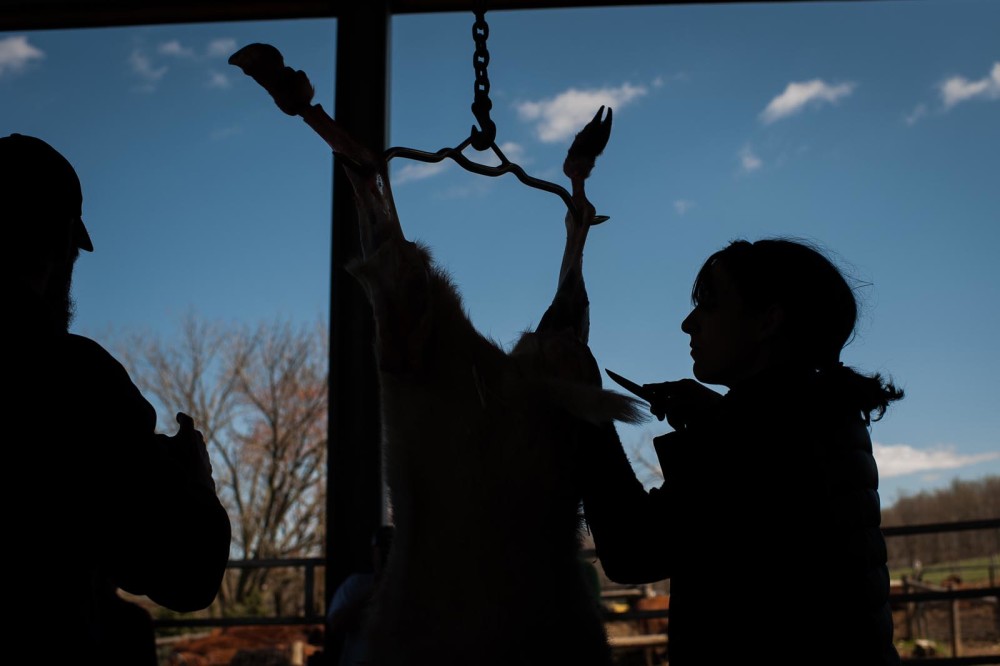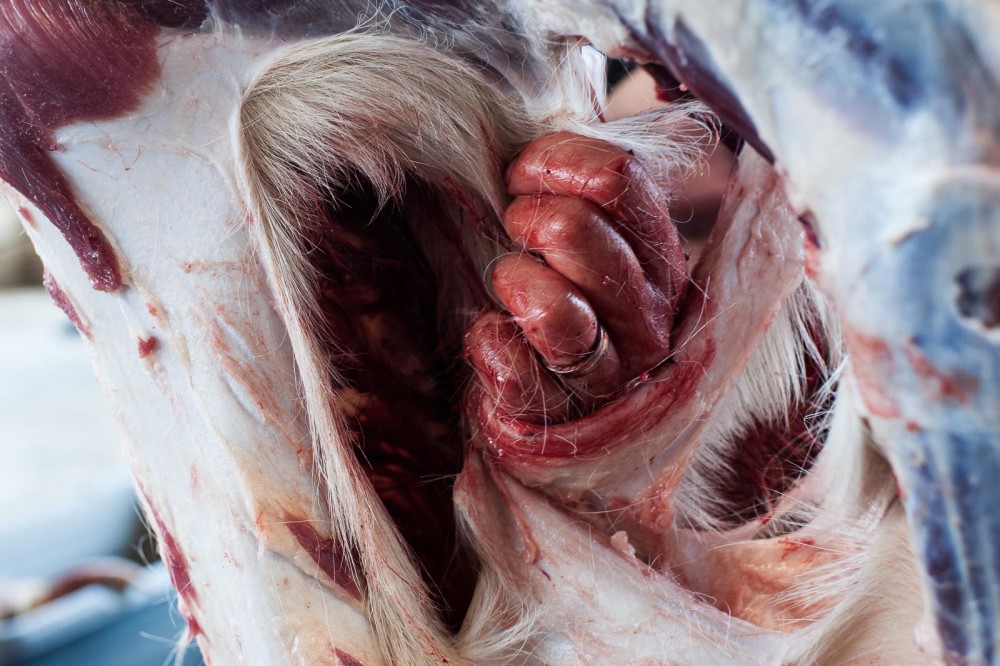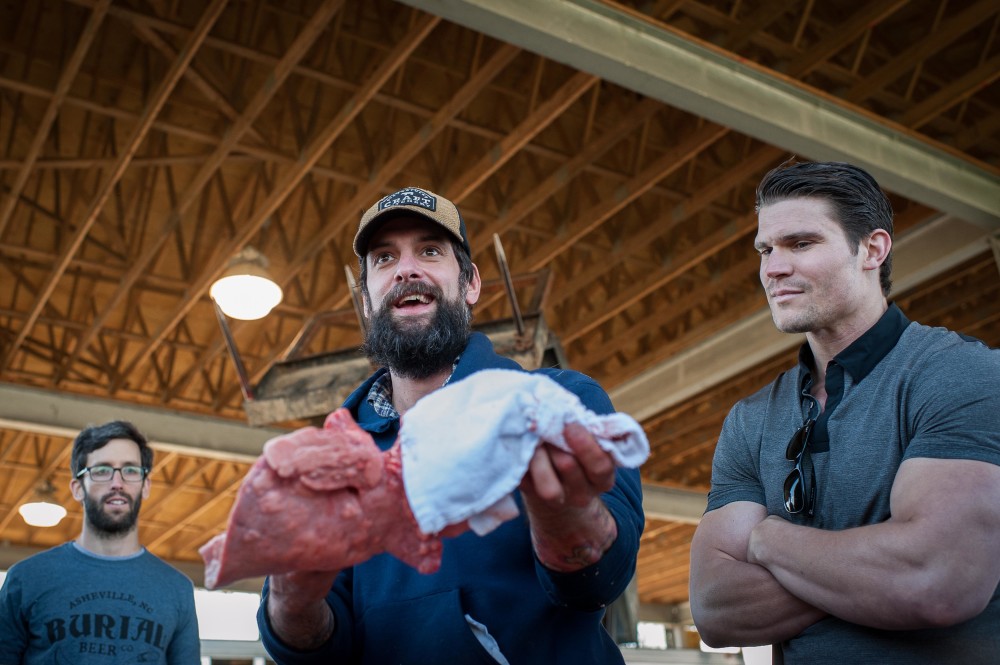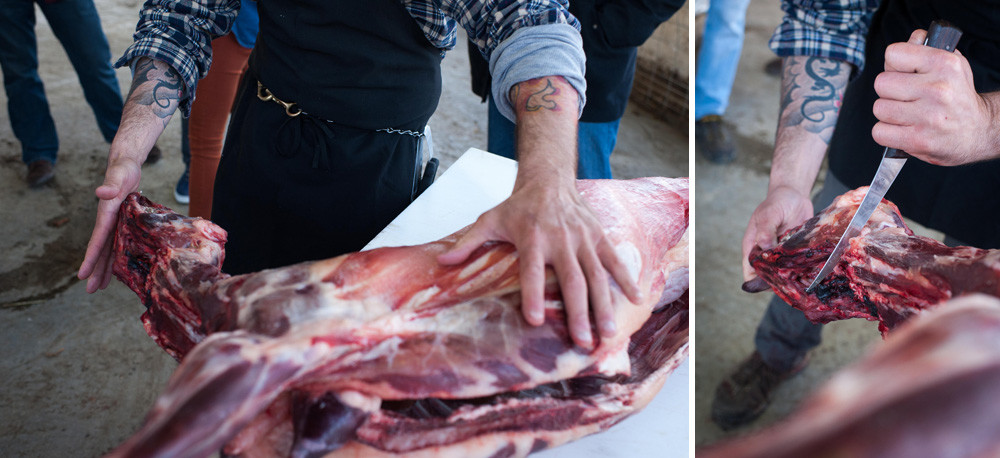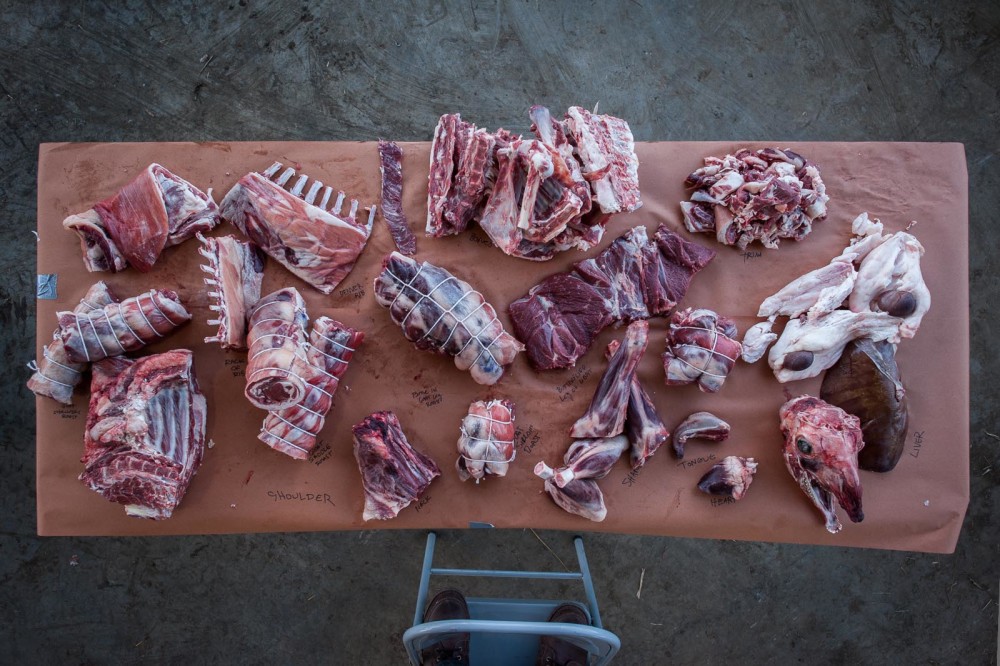A small crowd forms a circle in the sunlight just outside of a large, open-air shed at Wyebrook Farm. Bryan Mayer, a butcher and soon-to-be shop owner in Philly outlines the process that’s about to take place: He and fellow butcher Heather will enter a trailer—where a mature goat has been kept for the last 24 hours—with a captive bolt stunner, which will be used to kill the animal without immediately stopping its heart. They’ll then drag it out of the trailer, bleed, skin and eviscerate the carcass, then send it to cold storage to hang for several days. A previously-prepped goat will be swapped in for the butchering demonstration that follows, but the organs of this animal—the blood, the liver, the heart and the lungs—will be used in tonight’s dinner.
“One of our goals is to minimize stress for the animal,” Bryan explains, noting that slaughterhouses are designed specifically for this purpose. He and Heather have already spent time in the trailer with the goat, calming him and getting him used to their presence. There’s little margin for error; movements must be calm and steady, swift and accurate.
Within five minutes, the animal is being bled out, and the group quickly gathers around to watch. A few people turn away, only to sheepishly turn back and peek—it’s not easy to stomach all of the blood, but they’ve come here to learn about their food at its source, and this is a necessary part of the process for putting it on the table.
Tensions ease a bit once the goat is hanging, then we break before the butchering begins. We’ll soon be eating a goat-centric menu that includes bacon-wrapped liver, heart and lung gnudi, ravioli stuffed with blood pudding, and various cuts of grilled meat, served with an assortment seasonal vegetables. The images below document the events leading up to dinner.
Please be warned that these images are graphic.
